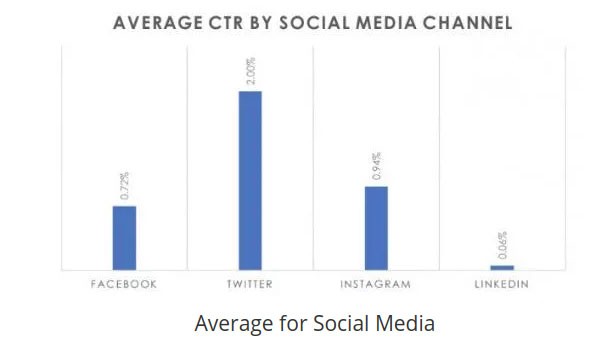What if everyone you target marketed would click on your webpage, social media page, page ads, and even your solicited emails? What if this resulted in even more leads and sales for your business, which is especially crucial for small to midsize businesses looking to grow?
This is exactly what a good click-through rate (CTR) campaign promises to do for you. In fact, a good click through rate in marketing enables you to quickly and easily calculate and fix any CTR issues that can be hindering your business from reaching its greatest online potential.
What is Click Through Rate?
The click-through rate (CTR) is how many visitors click on your webpage, links in your webpage, including your social media pages, and your emails.
Meanwhile, there is also a click through rate in marketing, which measures the number of people who click on your PPC ads and call to actions (CTA).
However, it does not count every ad click, just the clicks on the ad that lead to your site. In other words, it does not count those clicks where visitors saw the add but only later returned to your site because they saw the ad.
Hence, CTR in marketing is measured by more instantaneous actions to advertisements. Therefore, it is valued differently than search engine traffic because its aim is more towards financial gains and conversion rates.
Why Does Click Through Rate Matter?
Click-through rate is important for various reasons, including it means qualified users are coming to your site and performing valuable actions, such as making a purchase, signing up for your emails, filling out contact forms, or just getting answers to specific questions they may have, all of which are your main goal.
In marketing, click-through rate is crucial because it helps increase your quality score, which, in turn, also helps determine how much you pay each time a visitor clicks on an ad.
CTR also determines the position of your ad on SERPs. In fact, the top position goes to the advertiser with the highest Ad Rank, no matter how much the advertiser bids.
Depending on your current CTR, search engines, such as Google, will also usually assume that any ads after that will also carry the same ranking, which can cause your ads to appear lower in search results if the current CTR is low.
Using click-through rate google analytics helps you further improve your quality score by enabling you to generate relevant paid search ads that help advertisers meet their customers’ needs for more quality clicks. Simply getting visitors to your site is good for increasing web traffic; however, it does not increase conversion rates. Likewise, simply getting visitors to click on ads based on curiosity will not result in increased profitability.
We can set-up and optimize your Google Ads for you but let’s also test your website’s SEO potential. Takes 60 seconds!
Paying for traffic is an important way for many businesses to grow but ranking naturally in Google for your important keywords is free. While Diib helps 1000s of businesses grow with Google Ads management, Diib is also one of the best SEO tools in the world and uses the power of big data to help you quickly and easily increase your traffic and rankings. Diib will even let you know if you already deserve to rank higher for certain keywords. As seen in Entrepreneur!
- Over 500,000 global members
- Keyword and backlink monitoring + ideas
- Built-in benchmarking and competitor analysis
- Easy-to-use automated SEO tool
- Speed, security, + Core Vitals tracking
- Too busy for SEO? Diib’s Growth Experts can set-up and optimize your ads!
Used by over 500k companies and organizations:
Syncs with 
What is a Good Click Through Rate?
When used as a measurement, click-through rate enables you to gauge the relevancy of your ads or content in regards to your visitors.
The click-through rate can be measured using the formula for click through rate, which is CTR (click-through/impressions) x 100. Using the formula for click through rate allows you to see the average number of click-throughs per 100 digital ad displays in percentages. For reference, here is that formula:

You can also take the number of people that click on a component and then divide it by the total number of page views to arrive at the rate.
CTR can also be calculated using a click-through rate calculator, such as this click-through rate calculator. Using a click through rate calculator weekly, or even monthly, will enable you to compare your CTR week by week or month by month to gauge your performance cumulatively over the weeks or months and determine when your ads, landing page, or targeting needs improvement.
You Might Also Like
A high CTR typically means that visitors are finding your content or ads very useful and appropriate, while a low CTR most likely means that your content or ads aren’t deemed as useful or appropriate to your visitors.
Therefore, it could indicate that you’re marketing to the wrong audience, or maybe you are targeting the right audience, but your message isn’t persuasive enough to get them to take action. Whatever the case, you will need to take steps to improve your ads’ relevance in order to generate a good click-through rate.
To determine what is a good click-through rate, you will first need to take a look at your industry and what its average click rates are because good rates will vary by industry or business. Pages like this one, from Instapage, can help you with the various bounce rates:

For instance, it is not uncommon to see high click-through rates on pertinent keywords when they are clicked on by visitors searching for your product’s name or your brand name. On the other hand, click-through rates tend to be lower for broad, non-relevant keywords.
Once you have an idea of the average rates for your industry, you can then begin taking steps to get a higher CTR for your business.
Good CTR for Facebook Ads
When it comes to what is a good click through rate for Facebook ads, which includes the number of people who click on a specific Facebook post, paid search, display advertising, or email marketing, it will also depend on your industry or business.
For instance, legal advertisers tend to have the highest CTR on Facebook at 1.61%, which may be due in part to their ability to stand out more on a prospect’s social feed rather than on the search engine results pages. However, the average CTR for Facebook is currently around 0.9%.
The click through rate formula for Facebook is Facebook CTR = Total Clicks/Total Reach 100. Here is an illustration of that formula:
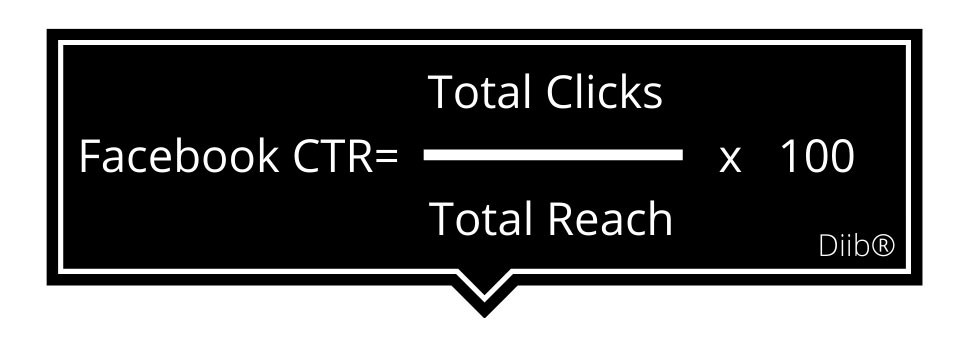
If your click-through rate for Facebook is low, then as with any other click through rate campaign, improving your targeting and initiatives on Facebook can help you increase click through rates. In the end, this will help lower your cost per click.
When is a High CTR Actually Bad?
Ideally, achieving a high click-through rate is essential, especially PPC ads, because it directly affects your quality score and how much you pay each time someone clicks your search ad. High-quality scores enable you to optimize or keep your ad position, which in turn translates to lower costs.
However, there are times when a high CTR can be bad. For instance, if a keyword isn’t pertinent to your business, it may generate a lot of clicks, but it isn’t going to generate sales, leads, or branding gains, for your business, which is bad.
This is because you are charged for each click; therefore, the more clicks you get, the more ad costs it will generate without bringing in additional sales, which means you are just losing money.
Furthermore, if your keywords are priced too high, even if they result in a sale or conversion, they still won’t generate profit. Conversions are how you gauge success.
Therefore, your goal shouldn’t be just to get high click-through rates but to get high click through rates on CTR keywords that are relevant to your landing page, your ad text, and your offering. The keywords should also be affordable, so they don’t hinder you from making a profit.
Strong CTR for your Ads?
There are various ways you can help create strong CTR for your ads. However, the biggest factor in creating strong CTR ads is to ensure your ads are interesting and useful to your target audience, which increases the chance they will click on your ad and make a conversion.
Targeted Keywords
To achieve high click-through rates in PPC, you will also need to efficiently compartmentalize keyword groups to ensure closer targeting. For instance, if someone is searching for white athletic shoes, they expect to see an ad for white tennis shoes and not just a general ad for athletic shoes or a list of athletic shoes you sell. Likewise, you should also narrow your bidding to only relevant targeted keywords, to help keep your costs low. You can narrow down your search with Diib’s keyword analysis tool. Customize your keyword game, learn what your competitors are doing and what you’re doing that works or doesn’t work. This tool compiles data from all over the world and brings you actionable insights. Here is what that page might look like:
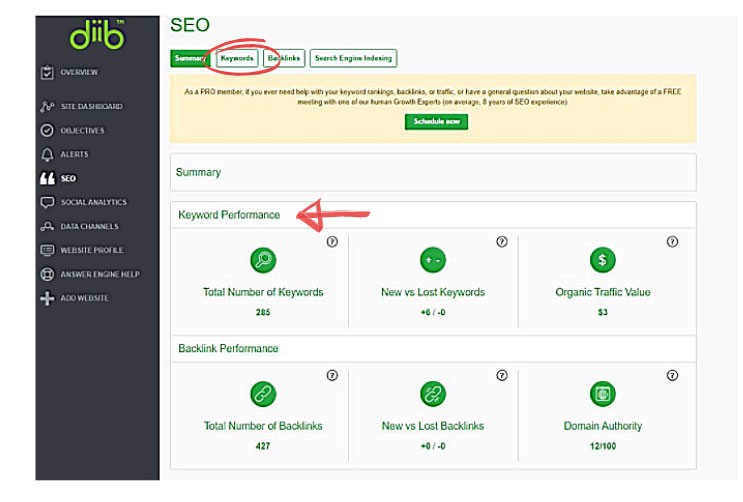
Eye-Catching Headlines
You can also improve CTR for your ads by optimizing your headlines and copy by using one or two focus keywords in your headline and copy, which will help make them more clickable. In fact, most people will look at the top ad headline before moving on to other ad headlines, so you wanna be sure your headline is geared to your target audience, which can be done by creating keyword-targeted headlines that appeal to your audience’s emotions and needs.
Inviting Call to Actions
Direct and inviting calls to actions can also help generate stronger CTR. Therefore, be sure to write intriguing calls to actions that are useful and inviting, which will help inspire visitors to click on your content. Check out these two examples of great CTA’s:

Intriguing Visuals
Adding videos, GIFS, and other engaging visuals to your ads can also help improve CTR because it helps your brand stick out in visitors’ minds, which increases the chance they will return to your site. In fact, some studies show that many social media platforms, such as Facebook, had great improvement in traffic and converting customers after video was added to the page. Again, you’ll see the above images as examples of the visuals.
Targeted Hashtags
If you have a low CTR on your social media page, using certain hashtags might help better engage your target audience and increase CTR on PPC ads. Therefore, consider which hashtags most appeal to your visitors and then incorporate them into your page. Again, remember to pay attention to your headline and copy. This is how to use hashtags to promote your services or products.
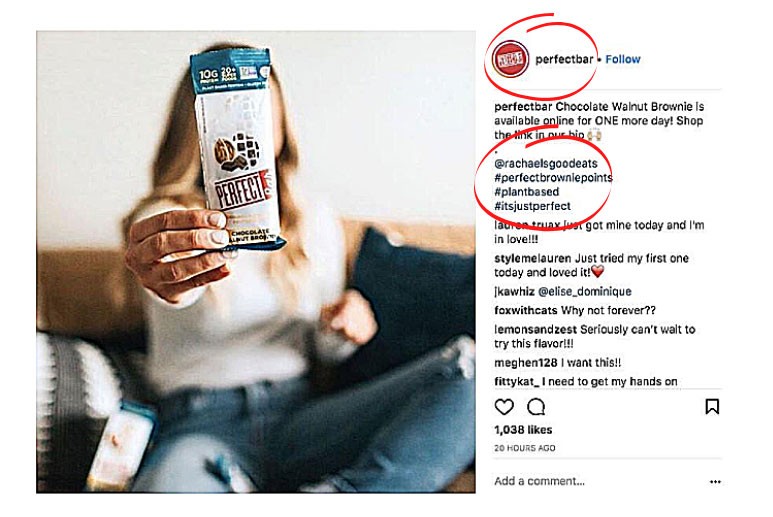
Customer Polls
You might also consider polling past customers to help improve your CTR. By polling your past customers, especially those who were on the verge of not converting, it helps put you in similar customers’ heads to learn any objections that may prevent them from converting.
This insight can then be used to help create a more targeted campaign that helps you retain your current customers and also generate more quality leads.
You can also find out from your past customers their reason for searching for a solution that your product or service provides, which will help let you know about their needs and drives.
The feedback provided by your customers can then be used to help build data-driven personas, or fictional characters, that will help you better answer important questions, such as who are your customers? It will also help you uncover your customers’ main goals, as well as what is hindering them from achieving their desires, which will help you build better/more targeted ads that generate more clicks. This is just one example of a survey you could use to customize your ads.
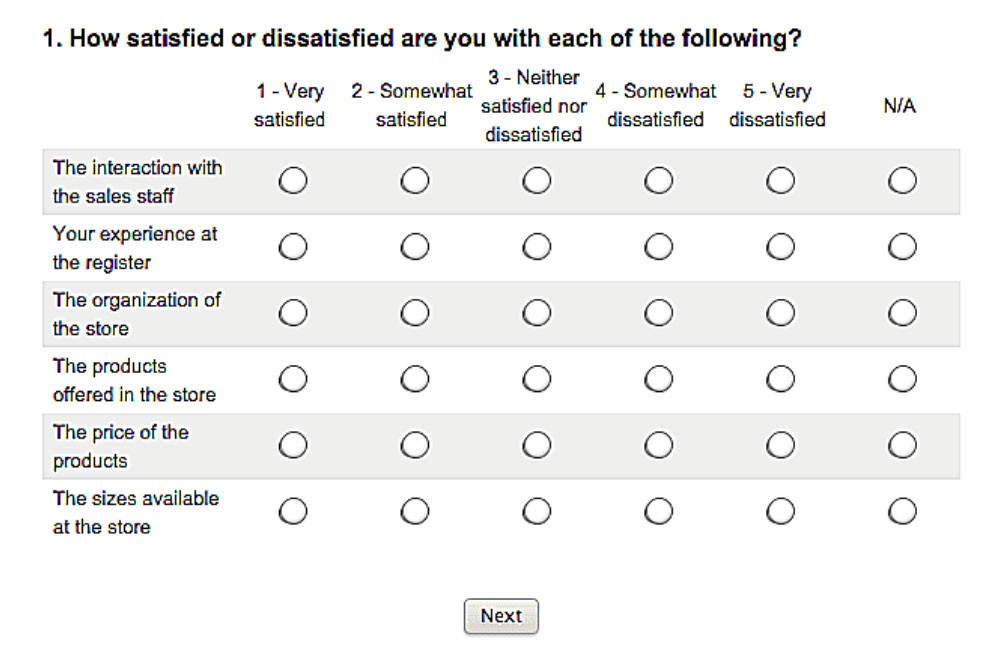
(Image credit: surveymonkey.com)
Click-Through Rate Google Analytics
In the meantime, you can use tools, such as Google Analytics, to help analyze how well your targeted keywords are performing. If, while reviewing your website’s data, you find that your keywords are not performing as expected, you can then take the necessary steps to improve your keywords.
You can also use Google Analytics to track your ad performance, such as which ad campaigns are driving traffic, which ads are bringing in a qualified audience, how many conversions have taken place, and more, which can also be used to help meet your sales goals. Diib® software seamlessly integrates with Google Analytics, giving you your complete CTR picture. For instance:
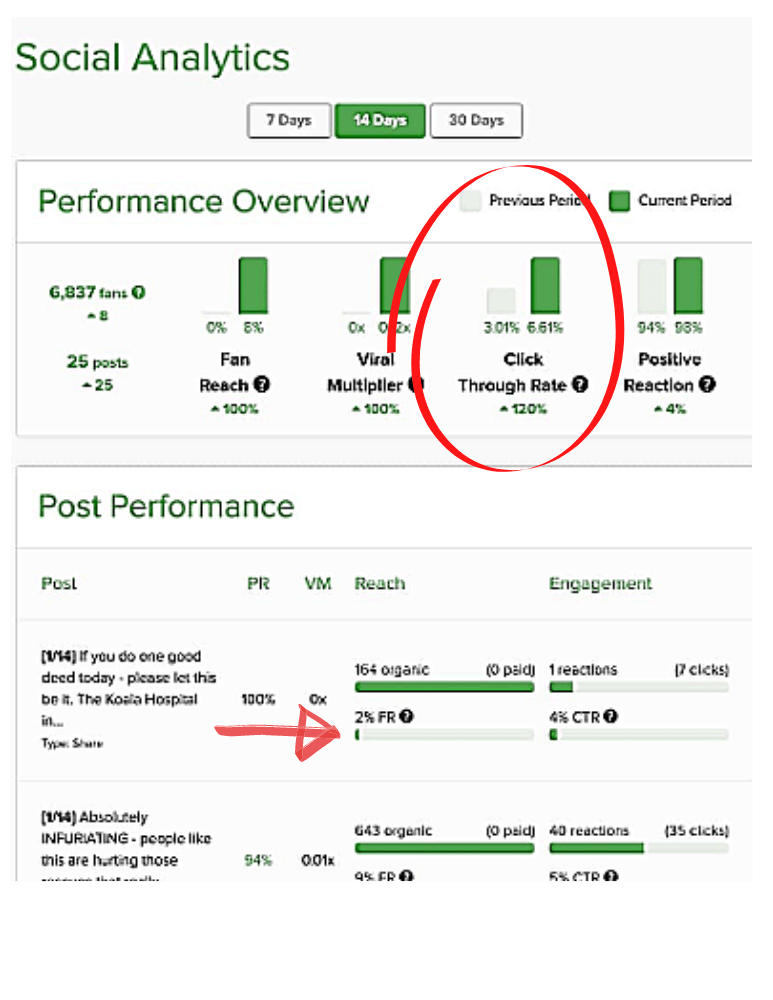
CTR and Search Engine Optimization
Search engine click through rate shows you the number of people who clicked through your site out of the number of people who simply viewed it, and it is believed to have a direct impact on search engine optimization because similarly to click through rate optimization, the more organic click through rates your page has, the higher it will rank in search engines.
In fact, various studies suggest that even if your page has a low ranking on the first page, a higher CTR will most likely cause it to get bumped up because it is a clear indicator to Google that lots of people are finding your site interesting or useful. Hence proving CTR optimization helps improve organic rankings, causing your page to rank higher in search results, thus increasing traffic, which is also great for SEO.
We hope that you found this article useful.
If you want to know more interesting about your site health, get personal recommendations and alerts, scan your website by Diib. It only takes 60 seconds.
Email Click Through Rate
An email click through rate is the number of people who click on one or more links in an email once it has been opened.
The email click-through rate is calculated by dividing the number of people that have clicked on your email campaign by the number of emails that were delivered. That number can then be multiplied by 100 to arrive at a percentage, or # of clicks/# of delivered emails x 100.
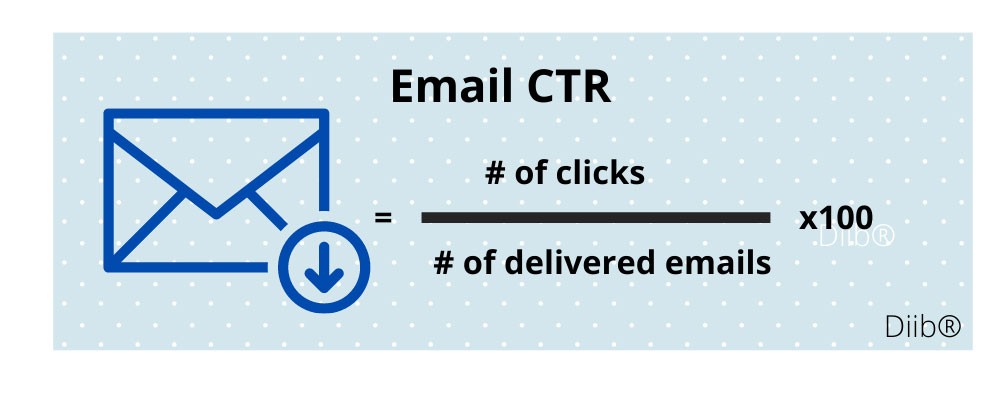
In general, there is no ideal of what is a good click through rate for email; however, to determine what is a good click through rate for email for your business, again, you will need to compare your rates with those of the industry.
If your click-through rates are high, then it means your email campaign is working. On the other hand, if your click-through rates are low, then it means your campaign could use some improvement.
The main way to improve your email click-through rate is to ensure the email contains relevant content. One way to ensure your emails are relevant is by personalizing them. Ensuring your emails are mobile-friendly has also been shown to help increase email click-through rates. You should also remember that just as important as it is to ensure proper placement of your CTAS to help make them more effective, you should also remember that the fewer the CTA’s, the better.
Improve Your CTR with Diib® Analytics
In the end, CTR is just as important for generating website traffic for great SEO, as it is for enhancing your ad performance for greater sales. In fact, some argue that in many cases, they are interconnected, so don’t skimp on the value of CTR for all your marketing campaigns. When in doubt about the best ways to improve CTR for your site, or if you just don’t feel comfortable doing it yourself, you may consider partnering with professionals. Diib growth experts will give you actionable steps to improve not only your CTR, but almost every metric that can impact your website health.
Diib can help you with your CTR in the following ways:
- Objectives to help you isolate your CTR across several channels and give you simple steps for improvement.
- Alerts that tell you about your Domain Authority and other technical issues that can impact your CTR metrics.
- Competitor research for up to 6 of your most intense competitors.
- A monthly call with a Growth Expert to see how you can grow your domain authority.
Click here for your free 60 second website analysis and current CTR, or call 800-303-3510 to speak to a professional growth expert.
FAQ’s
There are so many free CTR calculators available on the internet, however, they do vary in quality. Beware of companies who have lots of pop-ups or poor page speed.
This depends on the type of email campaign you are implementing. Triggered (requested emails) and autoresponders get higher open rates (45.70% and 34.80%) than newsletters (22.83%). Click-through rates, depending on the industry, can range from 1% to almost 5%.
In general, CTRs are higher on mobile devices than laptops. This could be due, at least in part, to the proliferation of mobile searches.
This metric is calculated by taking the number of unique clicks divided by the number of unique opens. Using our ongoing example 100 clicks / 180 opens (multiplied by 100 for a percent) = 55%.
On average CTR across all industries in Google Ads is 1.91% on the search network and 0.35% on the display network.
CTR stands for click through rate and is the percentage of people visiting a web page who access a hypertext link to a particular advertisement.

